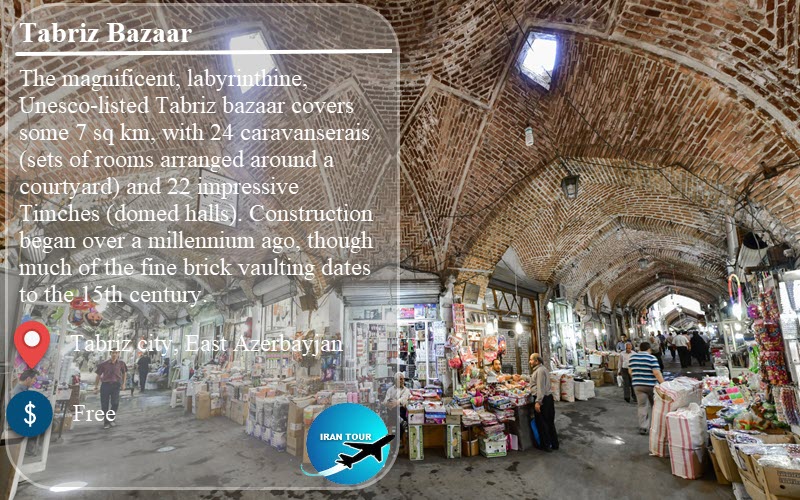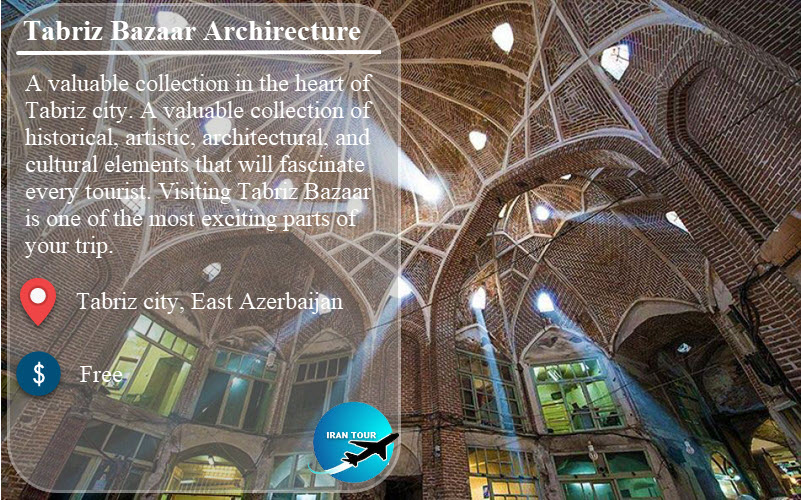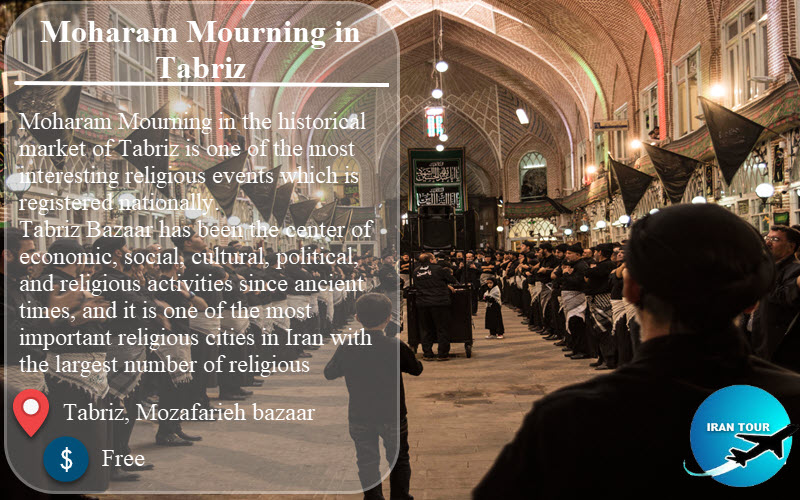Copyright 2020 - 2021 irantour.tours all right reserved
Designed by Behsazanhost
Tabriz Bazaar the biggest world roofed Market
Tabriz Bazaar the biggest world roofed Market
Tabriz market is considered the most important and the largest old covered market in Iran and the world, which is located in Tabriz city in Iran. This market has an area of about one square kilometer. Tabriz bazaar was registered on the UNESCO world heritage list in August 2009. Due to the location of Tabriz city at the crossroads of the Silk Road and the daily passage of thousands of caravans from various Asian, African, and European countries, this city and its market have been very prosperous. Many tourists and travelers such as Ibn Battuta, Marco Polo, Jackson, Yaqut Hamavi, Gaspar Droville, Alexis Soktikoff, Jean Chardin, Eugene Flandin, Clavijo, Robert Grant Watson, etc. have praised the prosperity and splendor of Tabriz Bazaar.
 |
This bazaar with about 5,500 rooms, shops and stores, 40 types of jobs, 35 houses, 25 Timchehs, 30 mosques, 20 streets, and markets, 11 hallways, 5 bathrooms, and 12 schools, is known as the main trading center of the people of Tabriz. This collection was registered as one of Iran's world heritages in the UNESCO World Heritage List with registration number 1346 In 2010. From the second half of the 13th century, English merchants via the Silk Road and after passing through the cities of Istanbul and Trabzon, they transported their commercial goods to the Tabriz market. This Bazaar had become the center of British trade during the time of Abbas Mirza1804–1813 (Qajar).
 |
History
Tabriz has been located at the crossroad of cultural exchanges and was an important commercial center on the Silk Road. On the other hand, there has been one of the first urbanism in Iran after arriving in Islam. The bazaar was mentioned by the Venetian traveler Marco Polo, who claimed to have passed through it while journeying on the Silk Road. The central core of Tabriz city is located inside a quadrilateral and the Tabriz bazaar is located in the center of the city like all the markets in Iran.
This great magnificent architectural structure is divided into rows, corridors, Caravanserais, Timches, and different areas with various functions like Amir Bazaar (for gold and jewelry), Mozzafarieh (hand-woven rugs, sorted by knot size and type), Bashmakhchi Bazaar (shoes), Kiz Basdi Bazaar, and Rahli Bazaar (produce).
The glory days of Tabriz's Bazaar prosperity were during the Safavid period, in the 16th century, when the town became the capital city of the Safavid kingdom. But it lost this position in the 17th century. Although, Tabriz has saved its status as a trade center and economic hub of the city and northwestern Iran. Tabriz market has not only maintained its economic role throughout the centuries, but also its political and social role during the constitutional revolution(1905 - 1911) and the Islamic revolution of Iran(1979).
 |
Structure
The Tabriz bazaar with 27 hectares, 5.5 kilometers of bazaar lanes (Rasteh Bazaar or main street in Bazaar) 5,500 rooms, shops and stores, 40 types of jobs, 35 houses, 25 Timchehs, 30 mosques, 20 streets, and markets, 11 hallways, 5 bathrooms, and 12 schools, and the most beautifully decorated roofs is the largest brick-building Bazaar and trading complex in the world.
Both the domed and vaulted Bazaar present complex structures demonstrating advanced techniques of laying bricks. They are decorated with original Iranian architectural decorations like Muqarnas, Brick-work, Tile-work, Mosaic, Domes, and other Iranian architectural elements. Most of the bazaar's Timchehs and Serai has three floors, the lower floor is designed for storage, the second floor is for business and workshop, and the third floor is designed for rest and comfort.
The main corridors are connected by the secondary corridors or alleys and there are Timchehs and Serais between them. The intersection of the rows or corridors with secondary corridors or alleys is covered by dome brick arches. The largest dome of the market is the Timcheh Amir dome and the most beautiful type of architecture is Timcheh Mozaffarieh.
Aga Khan Architecture Award
The market of Tabriz has been renovated many times in recent years. Tabriz bazaar renovation project was one of the five projects chosen by the jury of the Aga Khan Architecture Award in 2013.
 |
Ceremonies
Tabriz bazaar like all Iranian Bazaara holds different social, religious, and national events which can be very interesting for tourists. Among all these various ceremonies in Tabriz, the religious ceremonies on Moharam month(Tasooa & Ashoora days) have a very important role. The merchants cease trading for about 10 days and religious ceremonies are held inside the bazaar.
- Details
- Category: Museums of Tabriz